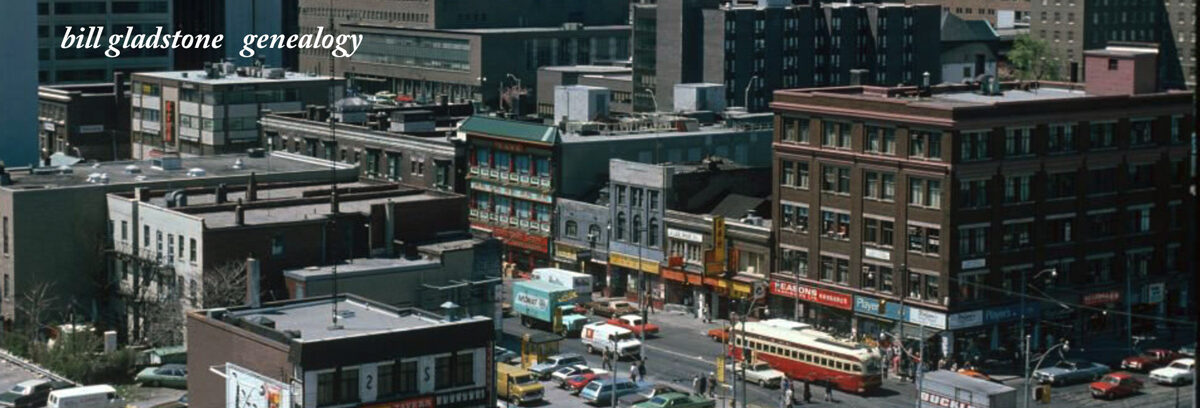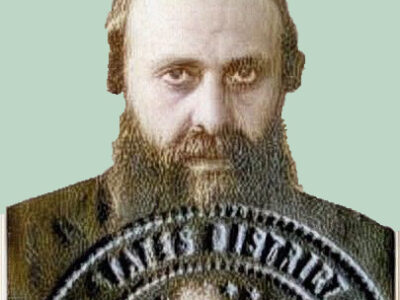Writers who dedicate their pens to preserving community history generally do so as a labour of love, knowing their literary efforts will probably not capture a large reading audience nor generate large royalty cheques.
Over the last decade, Miriam Bassin Chinsky has revisited the lush vineyards of her north Toronto childhood to write a series of popular articles for the North Toronto Town Crier.
The Town Crier recently (2004) published The Tailor’s Daughter: Growing Up in North Toronto, a collection of Chinsky’s fine literary sketches about the neighbourhood in which she grew up.
For those of us who recall reading any of these articles when they first appeared, The Tailor’s Daughter reminds us of how worthy they are of being preserved between the covers of a book, like pressed flowers from long ago.
A freelance journalist, Chinsky has also penned many articles for the Canadian Jewish News. Born in Toronto in 1925, she grew up along the stretch of Yonge Street between Eglinton and Sheldrake, and often roamed eastward to Mt. Pleasant and westward to Avenue Rd.
She writes with simple, sparkling elegance of this patch of urban territory as she knew it in the ‘30s, ‘40s and ‘50s, when north Toronto was a distinct and somewhat remote neighbourhood linked to downtown by streetcar.
She writes poignantly about her father and mother in his tailor’s shop on Yonge and in their home that was either above or very near the shop. She also provides vivid portraits of teachers, friends, neighbours, street merchants, politicians and other local characters, such as ‘Enry, a former sailor and itinerant labourer:
“A wisp of a man, bent almost double, he was one of that legion who gravitated to Toronto from the failing Prairie farms, from the impoverished East Coast towns and villages, from all across the country, and walked the city’s streets in the depressed ‘30s, looking for work or a handout. ‘Enry didn’t take handouts.”
Local history buffs will treasure Chinsky’s recollections of neighbourhood shops, department stores, schools, movie theatres and institutions such as the Preventorium. An “attractive white building with lofty colonial columns,” the Preventorium was a 128-bed facility for sick and convalescent children that once stood on Sheldrake near Yonge.
The pieces I like best are those that record some personal incident and carry an unseen twist and an important lesson about life. “To Fix A Tuxedo” and “End of Naivety.” are two examples. Each builds to an emotional climax involving the sharp perception of a previously undetected social or racial barrier.
“A Lytton Glade” recalls a garden party in an exclusive neighbourhood mansion which features an exotic sunken garden on its grounds. A magical place to a child, the private garden was later ceded to the city as a tiny gem of a park. Chinsky recalls the garden party and a return visit to the site five or six decades later.
This book is a pleasing memory-album of a neighbourhood at a time when movie theatres lured patrons by offering a fancy china plate at a low price with each ticket sold, teachers thought nothing of smacking their pupils, the iceman made regular rounds, and theatres (like the Eglinton, built 1936) were opulent palaces.
Chinsky describes the heat wave of 1936 and the polio scare of 1937, but seems to reach much farther back into history at times. She recalls seeing the Eglinton Hunt Club in all of its finery, “straight out of an English hunting print,” and, even more incredibly, provides a glimpse of Thomas Mower Martin, an old-time resident and artist who was born in 1838. ♦
© 2004
* * *






